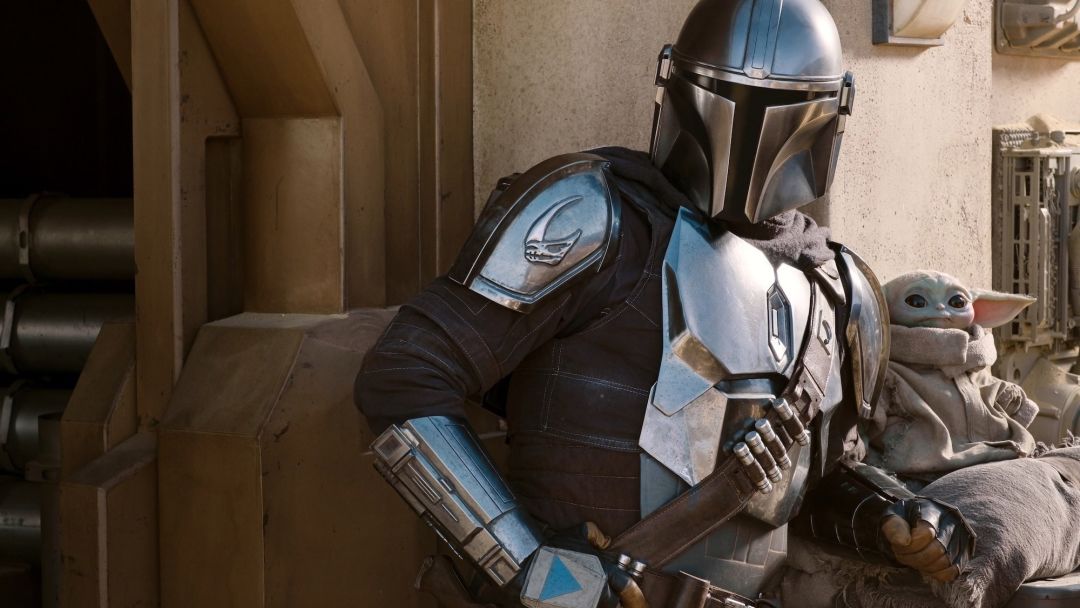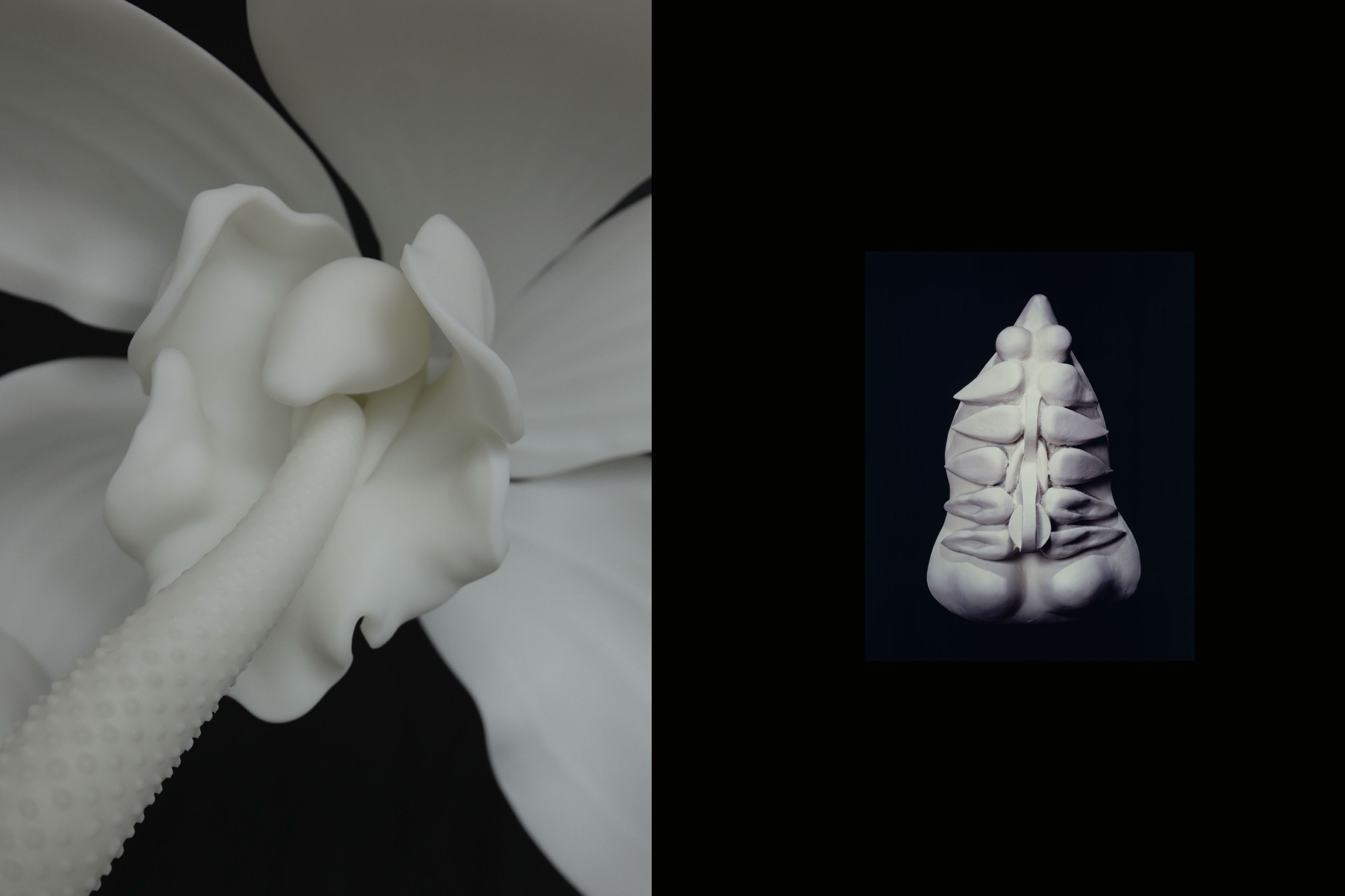What to Read, Watch, and Listen to This Week: Oct 29
Given *gestures broadly*, there’s a good chance you’re looking to escape, however briefly, into a show or a book or an album right now. To get the wheels turning, here’s the stuff filling our queues at Portland Monthly this week, from Cronenberg body horror to the return of Baby Yoda.
Go vote!
Maybe you've heard there's an election on Tuesday? It's now officially too late to mail in your Oregon ballot, so drop it off in person to one of these Official Ballot Drop Sites. But it is not too late to call your friends or family in swing states and make sure they have a plan to vote. You can send them to iwillvote.com for any relevant info for their state, and hell, feel free to share with them one of my fave Willie Nelson songs. —Eden Dawn, style editor
Double Feature: Videodrome & The Social Dilemma
David Cronenberg’s 1983 science-fiction body horror film Videodrome is both a relic of ’80s futurism and bizarrely prescient. The film focuses on Max Renn (James Woods), president of CIVIC-TV, a trashy UHF station specializing in sex, violence, and other taboo programming. But Max wants more. He wants to drive television into the future with something edgier. One day, he stumbles upon a broadcast called Videodrome, in which nameless victims are tortured and eventually killed. Enthralled, Max sets out on a quest to find the source of the broadcast and unravels a mind-control conspiracy. As Max delves deeper into this conspiracy, he experiences increasingly strange hallucinations.
Videodrome is one of the pioneers of what would later be referred to as “body horror,” a genre of horror that focuses on graphic and disturbing biological mutations and violations of the human body, and an iconic work that would define Cronenberg’s early career. And the film’s special effects (devised by Rick Baker of An American Werewolf in London fame) don’t go light on the body horror. Between a rash on Max’s body that grows into a full-blown VHS receiver slot, to a handgun that drills itself into Max’s hand, there’s much to cringe over. Besides its horrifying hallucinatory aspects, the film gets pretty heady, exploring the potential dangers of mass media consumption. As Max learns about the source of the Videodrome broadcast, he also learns about an underground culture war—one side wanting to eradicate the derelicts who consume pornography and violence, the other side wanting to propel us into the next stage of human consciousness. Paired with Jeff Orlowski’s 2020 documentary The Social Dilemma, Videodrome feels more pressing and potent, lingering on this unseen battle for our minds, for the power to control behavior.
The Social Dilemma (available on Netflix) features interviews from the people who supervised systems at Google, Facebook, Pintrest, Twitter, Instagram, and more, about how social media has been designed to manipulate our behaviors. We’re all generally aware of how our information is being mined for advertisers, and most of us are fine with it—you likely found this article via social media—but The Social Dilemma harrowingly examines how deep that data mining probe goes. And it’s shocking. Stuff that makes Videodrome’s underground culture war seem like child’s play. A horror movie in its own right. But with a hopeful message about the ethical responsibilities the tech industry owes to its creations—and to the people who use their creations. —Gabriel Granillo, digital editor
Emile van Dango
Singer, songwriter, and multi-instrumentalist Emile van Dango, better known by his stage name Yellow House, is a one-man band based out of South Africa. I fell into a slight obsession all of 2019, his psychedelic-indie croon accompanying me on all my commutes. I have since overplayed every song, but am overjoyed to find out his newest album, Mania/Post Mania just dropped on October 16! I’m only halfway through, but it delivers the same melodic hypnotization as his previous albums. I’m not ashamed to say I added him on Facebook last year in hopes we might be friends. He still hasn’t accepted. —Ainslee Dicken, editorial intern

The Mandalorian (Pedro Pascal) with Baby Yod—er, "The Child"
Image: Courtesy Disney
The Mandalorian (Season 2 Premiere)
Here's the thing: I'm a terrible Star Wars fan. I think the recent sequels were an unforgivable mess, and redeemed the much-hated prequel trilogy as a tightly-written epic in comparison. I'm not even that big a fan of the original trilogy. Empire Strikes Back is good and fun, but A New Hope is nearly unwatchable if you don't have some sort of nostalgic connection to it. For me, the best Star Wars stories exist on the peripheries of the main Skywalker narrative: Rogue One is objectively great and towers above the nine main movies, Solo is decent (change my mind), and The Mandalorian is a fun, refreshing space Western with an adorable Yoda to boot.
I cancelled my Disney+ subscription mere hours after the Mandalorian's season finale last December ... but I'll be back on board the Mickey Mouse's unstoppable content machine come Friday for the premiere of Season 2. If you don't like Star Wars, that's OK. You might still enjoy this. I know I do. —Marty Patail, editor in chief
Avatar: The Last Airbender
“What have we become that the highlight of our days is an episode of a kids’ show?” my husband asked grimly on a recent weeknight, as the family huddled around our nightly Netflix fix. He was talking about the epic animated saga Avatar: The Last Airbender, and the answer, really, is: We have become air benders, earth benders, fire benders, water benders, a constant storm of swirling and stamping and flailing arms as we crack into a saga so far away from our own world that we can enter it unmasked.
Truth is, we’re late to this cleverly crafted tale of a world where some of its populous have special powers over the four elements—they can manipulate air, or fire, or water, or earth—and one Dalai Lama-esque character can “bend” them all. The show, created by Michael Dante DiMartino and Bryan Koietzko, first aired on Nikelodeon in 2005, to critical acclaim, but only arrived on Netflix in May of this year and the timing could not have been better. Avatar: The Last Airbender, takes us through four warring kingdoms, gorgeously animated and populated by engaging and diverse characters with the right balance of levity—thank you cabbage man!—and earnestness. There is enough nuance and surprise—who is really good and really evil? what does power do to the ones who possess it? how do we find balance?— over its finely paced arc to keep up the intrigue, and while the creators clearly drew on various Asian influences and inspirations they do so without toppling into the appropriative, as Maya Phillips points out, somehow creating a world mostly free of whiteness. Do I sometimes cringe at the predictable heteronormativity of the budding romances? Yes. Do I wish there were a few more women leaders in the main roles? Yes. But I am mostly grateful for the fact that this is 61 episodes long and engaging all the way, with patience and grace and team work all part of the lightly handled message. There are, as even my husband will admit, worse ways to punctuate your days. —Fiona McCann, senior editor at large




